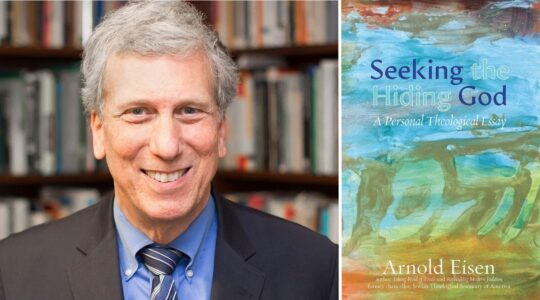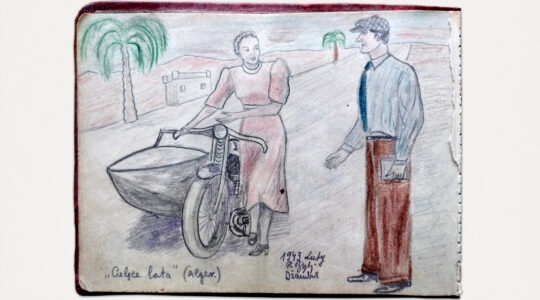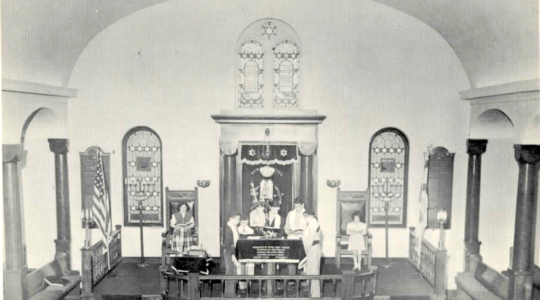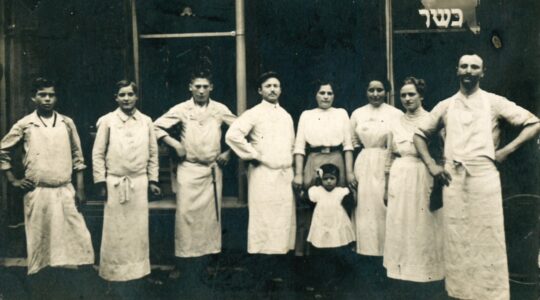I recently saw this quote in Braided Way Magazine: “Accessibility is being able to get in the building. Diversity is getting invited to the table. Belonging is having your voice heard at the table.”
Everyone wants to be seen and heard for who they are, especially in their own communities. Yet, for centuries, LGBTQ Jews have been condemned either as sinful or made to feel invisible.
We just concluded the High Holidays with Simchat Torah, a joyous celebration of the Torah, Judaism’s foundational text. After much singing and dancing, we chant the end of the Torah, telling of the death of Moses. Then, we roll back the scroll to its beginning and chant the opening verses recounting the Jewish creation story that culminates with the creation of human beings:
“God created man in His image, in the image of God, He created him; male and female He created them.” (Genesis 1:27)
“Male and female He created them.” Every year, LGBTQ Jews are confronted with feeling left out of the story. It seems that from the beginning, Jewish tradition is declaring that humans are either male or female. Two sexes, two genders, end of story. Or is it?
The Torah is not always what it seems to be. Nor is it the last word in Jewish tradition. From the ancient rabbis to the medieval philosophers and mystics to 20th-century feminist scholars to the LGBTQ commentators of today, our Torah has been analyzed down to its every word and letter — and this verse on the creation of humans is no exception. In fact, as far back as the ancient rabbis, Jews have been debating its meaning.
For example, in Genesis Rabbah (8:1), part of a collection of biblical interpretations, one rabbi makes the intriguing suggestion that the first human being was androgynous, male and female simultaneously, or in Queer parlance, “intersex.” This may seem surprising until we learn, from both their legal and literary interpretations, that the ancient rabbis were quite familiar with intersex people.
As the discussion continues, another rabbi suggests that God fashioned the first human being like a golem, a kind of genderless, incompletely formed mud-being. I find this interpretation incredibly powerful. The image of the golem implies that in our primordial, unformed state, we humans must each discover who we are over time.
These midrashim show how Jewish tradition can teach us more about sex and gender than many presume. Personally, I have gone through many phases using many terminologies to define myself sexually. As a teen, I struggled to understand my feelings for other girls, often feeling depressed, alone and somehow “wrong” physically and emotionally. Later, I came to define myself as Lesbian, and then a Butch Lesbian. Over the past decade or so, as the LGBTQ community has refined its thinking and language to describe gender and sexual identity, terms like “gender non-binary” or “genderqueer” come much closer to helping me define who I am.
Learning about these and other texts is not just important for Queer Jews. It is essential for the entire Jewish community. All Jews benefited from new understandings of Jewish texts and history, as well as new rituals and prayers, when women were admitted to the rabbinate, and increasingly to other positions of academic and institutional leadership. This sea change continues in mainstream American Jewish life, enriching us all.
It’s time for the next wave. Now, with LGBTQ Jews also in the rabbinate, queering Jewish texts must also become a mainstay of our tradition — not an occasional curiosity.
That’s just one way to bring LGBTQ voices to the table. It’s time for Jewish communities and organizations to up their game when declaring themselves to be “welcoming.” Mission and values statements need to be explicit about sexual and gender diversity and should be posted prominently on websites and walls. Gender-neutral bathrooms should be made available wherever possible. Those who are not LGBTQ persons can become educated allies by asking their synagogues, JCCs, or places of work to bring in speakers and trainings on the subject of inclusion.
Support the New York Jewish Week
Our nonprofit newsroom depends on readers like you. Make a donation now to support independent Jewish journalism in New York.
As Jews, we are called upon to do teshuvah during the High Holidays. Teshuvah literally means “returning” — returning to our best selves, to the fullest expression of who we are. As Queer Jews we may wonder what this means for us, especially in the current climate of divisiveness, hatred, and legal and even physical threats against us. How can we return to the fullest expression of ourselves — physically, emotionally, intellectually and spiritually — if there are still those in our own Jewish community who may let us in the building, but do not let us sit at the table? Or who may let us sit at the table, but do not hear our voices?
As the new Jewish year begins, let us acknowledge that we still have much work to do so that everyone, regardless of their gender, sex, religion or skin color, has a seat and a voice at the table.
We have a whole year before Rosh HaShanah comes again. Let’s get started now!
Susan L. Falk, rabbi, educator and spiritual activist, currently provides adult education, Jewish mindfulness meditation classes, musical Shabbat services and personalized lifecycle rituals in the tristate area. She served for 11 years as the rabbi for Congregation Kehilat Shalom, a Reconstructing Judaism synagogue, in Belle Mead, N.J. Rabbi Falk lives in Brooklyn with her partner.
The New York Jewish Week brings you the stories behind the headlines, keeping you connected to Jewish life in New York. Help sustain the reporting you trust by donating today.




